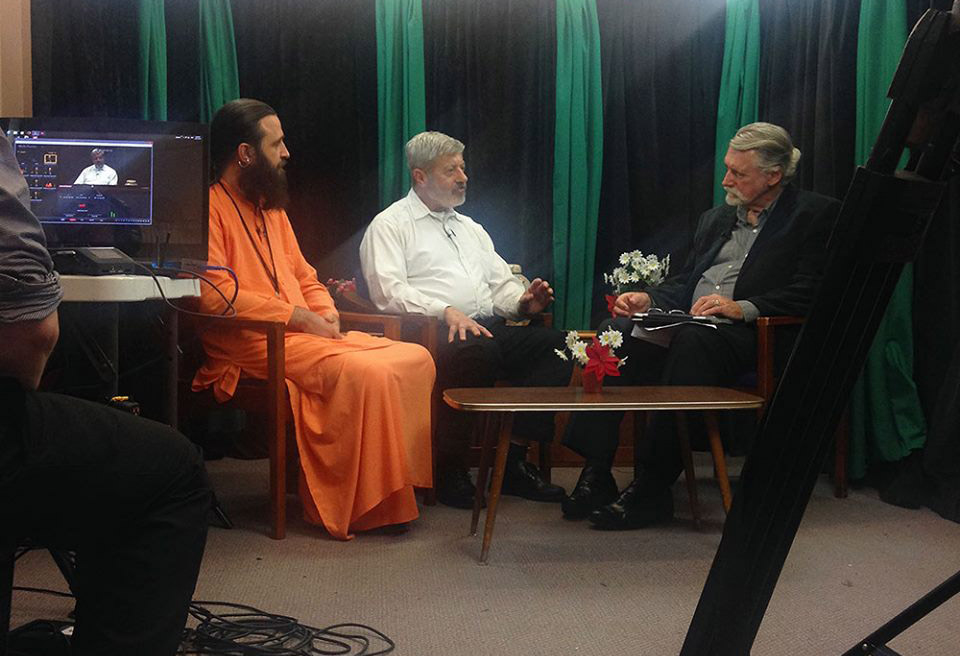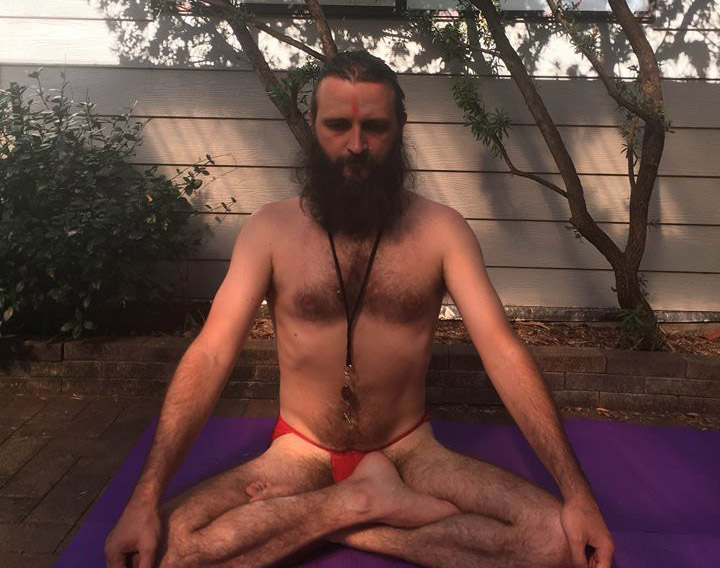There is its own Sūkṣma-veda in the Nātha Sampradāya, which is called the Gorakh Sabadī. There is also the Gorakṣopaniṣad and analogues of Vedanta (ātma-jñāna, brahma-jñāna), the Gorakh Gītā, the Gorakh Purāṇa and the Gorakh Tantra. Of course, all of this often differs from what most people see in it, and although essentially it is one whole, it should be better discussed separately. There is also its own nirukta – the interpretation of terms. For instance, according to nirukta, a term ‘ādeś‘ means the following:
आदेश नाम योग – योगेश्वरों का, नाम सत रुप नाथों का, आदेश नाम पूर्ण सिद्धों का आदेश नाम आत्मा, परमात्माऔर जीवात्मा की एकता का । आदेश नाम एक अन्तर आत्मा से दूजा अन्तर आत्मा में योग बनया ज्योति स्वरुप आत्मा को नमस्कार । आदेश नाम अद्वैत आत्मा आदेश नाम निर्गुण निराकार अविनाशी आत्मा को इतना आदेश शब्द निरुक्त सम्पूर्ण भया श्री नाथ जी गुरूजी को आदेश ।
Ādeś is the name of the Lords of yoga and yoga itself, the true state of the Nāthas. Ādeś is the name of realised siddhas, of the unity of ātma (an individual soul as it is), paramātma (an omnipresent soul) and jivātma (a soul incarnated in a body). Ādeś is the name of the unity of a soul (within a person) with another soul, reverence for the luminous nature of the soul. Ādeś is the name of the non-dual ātman, which is beyond qualities, formless and indestructible. This is the full interpretation of the term ‘ādeś’. May there be respect and will (teaching) of Śrī Nātha ji Guruji!
However, according to the Machhindra Gorakh Bodh (6), we see the following explanation of the term ‘ādeś‘:
मछिंद्र: अवधू आदेस का अनुषम उपदेस, सुंनि का निरंतर बास ।
सबद का परचा गुरु कथंत मछिन्द्र नाथ ।
Oh disciple, the guidance (upadeśa) in the immeasurable ‘ādeś’ transmission (anusham), where the infinity (nirantar) lives (vāsa) in the emptiness (śūnya). Speech is a manifestation of the guru (śabd kā paricaya guru) (obviously here is the connection of the guru with vāgbhava bīja “aiṃ”), This is what guru Matsyendranāth says.
That is, ādeś or, in Sanskrit, ādeśa means a certain transmission from a guru to a disciple or from a deity to a practitioner in a special form, where an instruction and the highest essence, or the meaning are inseparable. That is the subtle knowledge which guru reveals in a student, which is, in fact, the yogic experience. Since that is not an ordinary knowledge obtained in universities, it is rather revealed in a meditative state, in a state of utmost peace of mind and feelings, so this transmission may often be a non-verbal one. It frequently occurs even in silence between some yogis or gurus and those who receives śaktipāt from them. This is a relationship of a kind that a student understands a guru giving only a small hint, half the words, on a deeply intuitive level. As a rule, that is accompanied by the deep psychophysical transformation of the student’s nature.
We can find this term in other sources, for example, in Vedanta, in the Bṛhadāraṇyaka Upaniṣad (2.3.6):
अथात आदेशो ‘नेति नेति’।
So, the instruction, which is not this (and) not that.
(That is, the truth is outside of the scope of discursive thinking, the nature of the ātman is beyond any description).
Probably, this is where the origin of the Nāthas‘ focus on freedom from the inadequacy of duality or even non-duality, from any extreme, which is destructive and disharmonious comes from.
Thus, ādeś (or ādeśa) means the transfer of essential knowledge, for the sake of the deep spiritual transformation, where a disciple, being in a state of deep respect and utmost attentiveness, both in relation to himself and the guru, discovers the silent truth. We may call it the highest form of the mystical experience, leading to the total transformation, the transformation from a person to a God-man. This is the state of yoga in its essential, unified form and also in its many basic aspects, therefore there could be a connection with any kind of traditional yoga or religious practices here.
Many may consider the greeting ‘Ādeś!‘ among nāthas as an analogue to the well-known ‘namaste‘. ‘Namah‘ – means ‘respect’ and ‘te‘ – means ‘you’. However, as I see it, ‘ādeś‘ has a deeper meaning, it is rather the very essence of ‘namaste‘. By namaste, you honor a guru or a deity or someone you have respect for. It is kind of a pūjā. But why a pūjā is performed? It is performed for the sake of the inclusion in the nature of the divine and the descent of prasādam or śaktipāt. Here ādeś is, rather, the second stage, following the namaste, it is not just a pūjā as an action, but it is a successful performance. Such efficiency actually means staying in goodness, sometimes it can reveal some siddhis as accompanying side effects. Although the siddhis are definite indicators, in this case, it is not them that matters, but the state of siddha puruṣa, a pure perfect being. Whatever the pūjās are performed: vedic, purāṇic, tantric (including non-standard ones, like pañchamakāras), none of them have any meaning if there is no pure grace (prasādam). Therefore, ādeś, for a yogin, is a transforming inner spiritual purity and knowledge, it is more important than any, even the most seemingly exclusive religious techniques. This is not to say that they are good or bad, they may or may not work, as for example, a computer may be useful when it is connected to the Internet and, moreover, to electricity. In the same way, simply put, there is ādeś, in relation to all types of spiritual techniques and systems.








